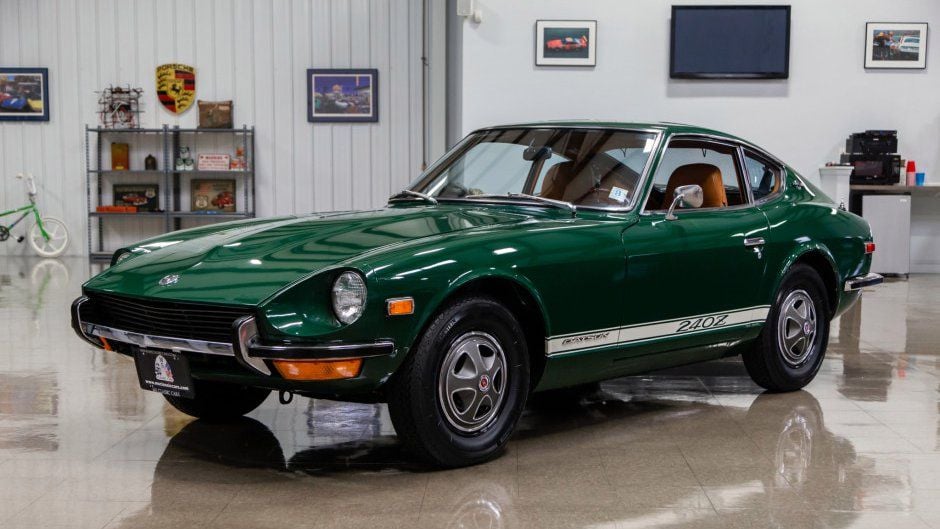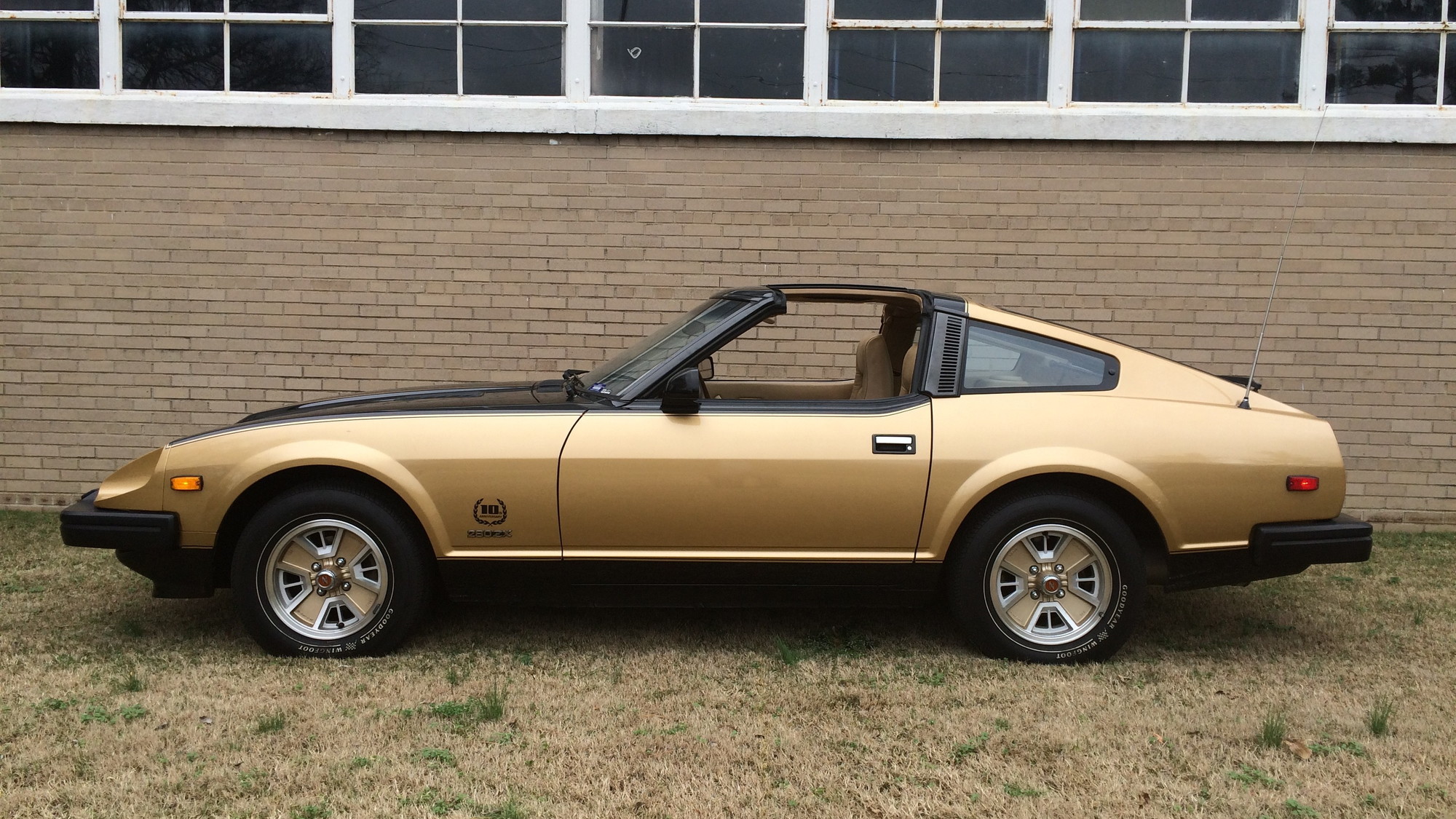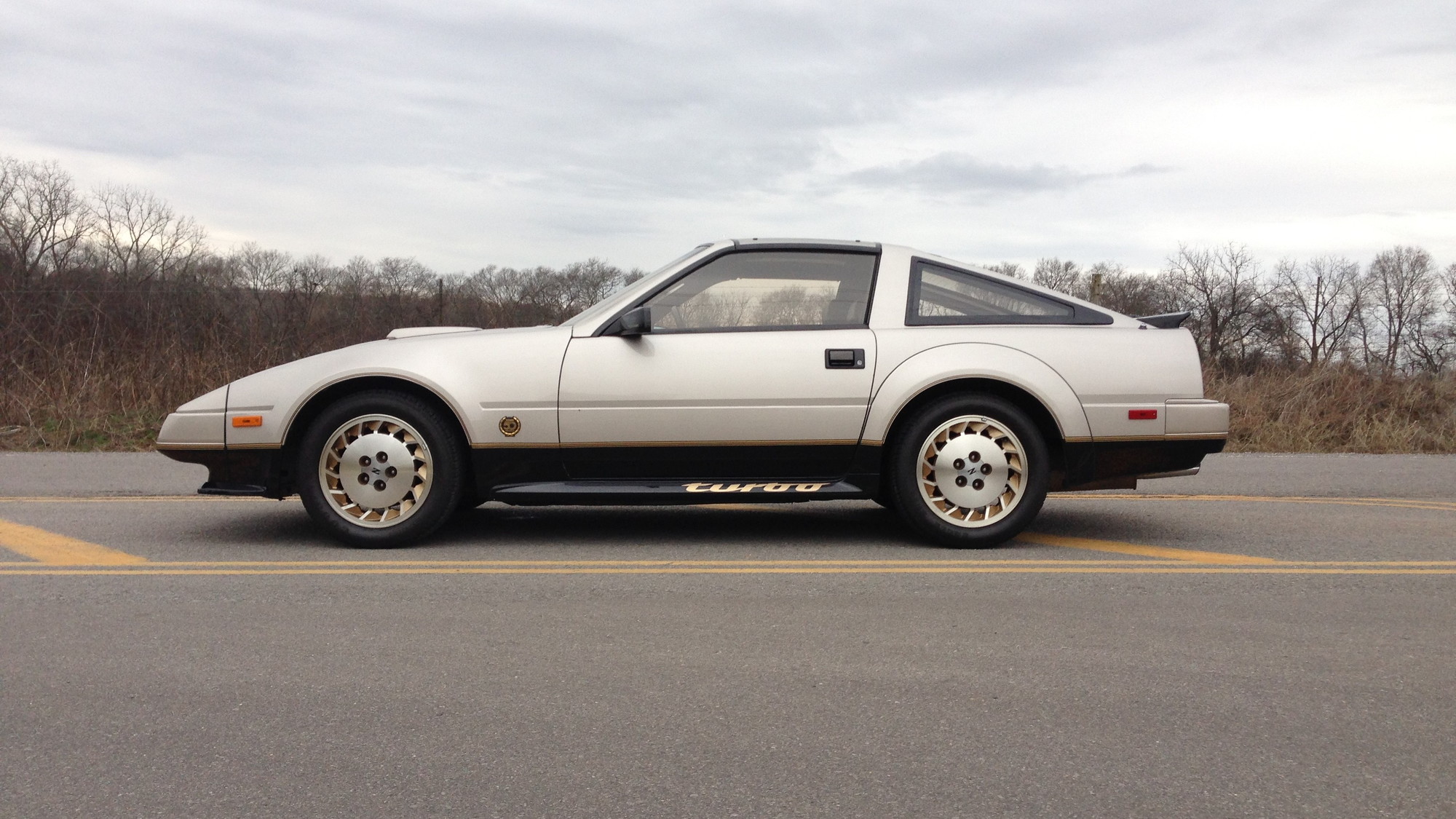America’s love affair with the sports car began with the postwar British cars of the 1950s. America got into the fray with the Chevrolet Corvette and Ford Thunderbird that same decade, and Japan entered the market in 1970 with the Datsun 240Z. Low and sleek, with a long hood and a pushed-back cabin, the Z started to make Americans think Japan could build cool cars.
The Z has been cool ever since. Through seven generations, it has grown in power and performance. It has vacillated in its mission between pure sports car and grand tourer, simple and high-tech, but it’s always been an aspirational car for enthusiasts and usually a good value.
Here, we trace the history of the Z by examining each of those generations.
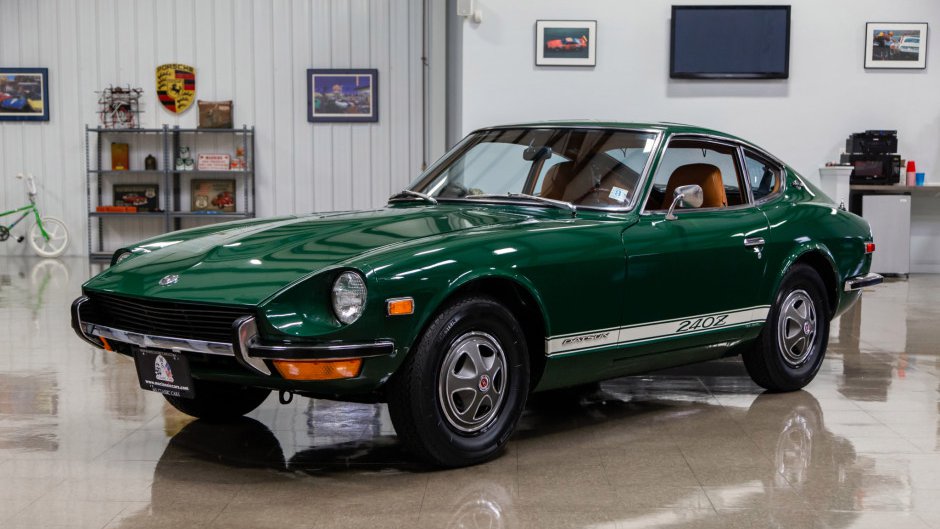
1971 Datsun 240z Series
1970-1973 Datsun 240Z
The 240Z hit the U.S. market as a bargain, with the right looks and right performance to back up its sports car mission. A two-seat fastback coupe with design elements from the Ferrari GTO and Jaguar E-Type, the 240Z replaced a line of four-seat roadsters with stodgier looks inspired by 1950s British sports cars. It was called Fairlady Z in Japan, but Datsun dropped the Fairlady name here because it was seen as stodgy. Datsun priced it from $3,526 at a time when the Chevy Corvette cost about $5,000, and it caught on with American buyers, selling almost 10,000 cars in its first year. That grew to more than 70,000 cars by 1975. The 240Z car’s long hood hid a 150-hp 2.4-liter inline-6 hooked to a 4-speed manual transmission. Nissan quoted a 125-mph top speed. Motor Authority’s senior producer Joel Feder said what it lacked in horsepower it made up for with torque available throughout the rev range. An independent suspension with struts front and rear and a light 2,238-lb curb weight gave it fun handling, while tall, skinny tires on 14-inch steel wheels contributed to a comfortable ride. Front disc brakes made it feel modern for the era, but the PlayStation crowd would be confounded by the car’s choke today. The 240Z proved its performance credentials on the track, where it beat Porsche for the SCCA’s C-Production championship from 1970-1973.
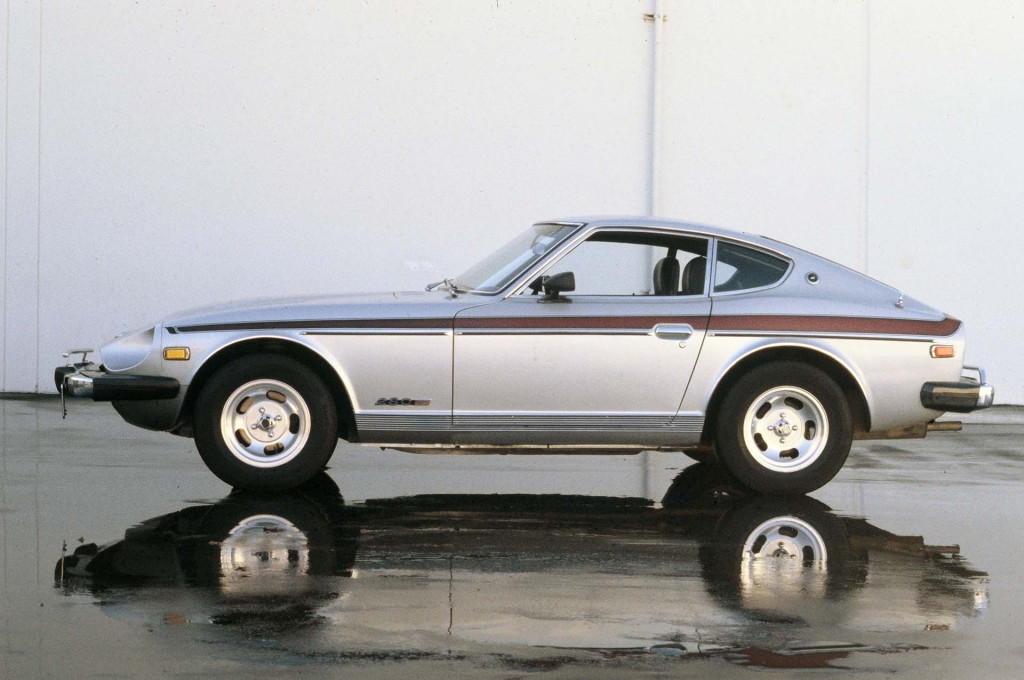
Nissan 280Z
1974-1975 Datsun 260Z and 1975-1978 280Z
The Z offered an optional 2+2 bodystyle in 1974, with an additional 11.9 inches of wheelbase that gave it a small back seat. Like muscle cars of the era, the Z’s engine got choked off by new emissions standards, cutting horsepower. Nissan gave it a longer stroke to increase the engine size to 2.6 liters and increase horsepower to 140 and then 165 by the middle of 1974. New 5-mph bumper standards increased the length by 6.3 inches in late 1974 and added 130 lb to the curb weight. The car became the 280Z with the addition of fuel injection and another increase in stroke to give the single-overhead cam engine a displacement of 2.8 liters and 149 hp. By now, the car weighed 2,875 lb. Output grew to 170 hp in 1977, though that was likely due to a change that involved measuring gross horsepower versus SAE horsepower. Datsun added an optional 5-speed manual transmission in 1977 as well. Both the 260Z and 280Z were continuations of the car’s first generation.
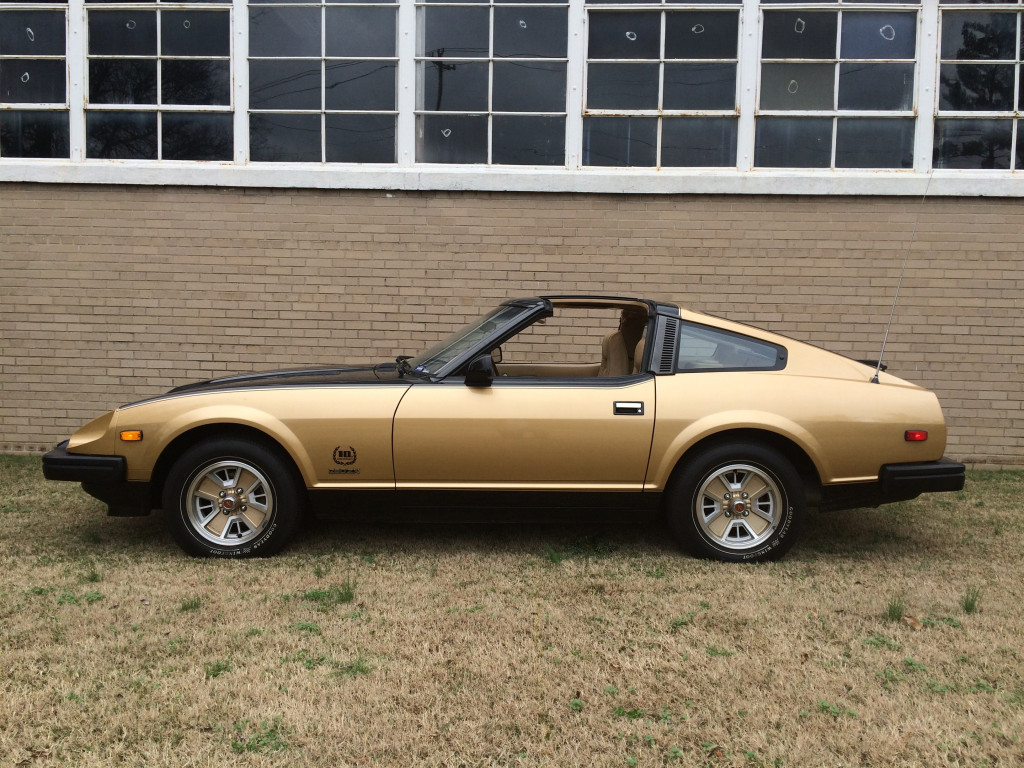
1980 Datsun 280Z 10th Anniversary Edition
1979-1983 Datsun 280ZX, S130
The S130-generation arrived for 1979 on a new platform modified from the underpinnings of the 810 sedan. It was still offered as a two-seater or a 2+2. The previous generation’s Chapman struts gave way to rear semi-trailing arms, but the rear suspension was still independent. Further emissions standards reduced horsepower to 135, but a 5-speed became the only manual transmission while a 3-speed automatic carried over. The car took a turn toward luxury with softer suspension bushings, more noise insulation, and improved interior appointments. Priced from $9,899, the 280ZX set a new high mark with 86,007 sales. For 1980, Datsun added a T-top option, as well as a black and gold Anniversary Edition to mark 10 years of the Z. While the base engine increased to 145 hp in 1981, that year also marked the release of the 280ZX Turbo that made 180 hp and cost $16,999. The Turbo weighed 2,995 lb, but it was faster than the Corvette of the era in the quarter-mile, posting an ET of 15.6 seconds.
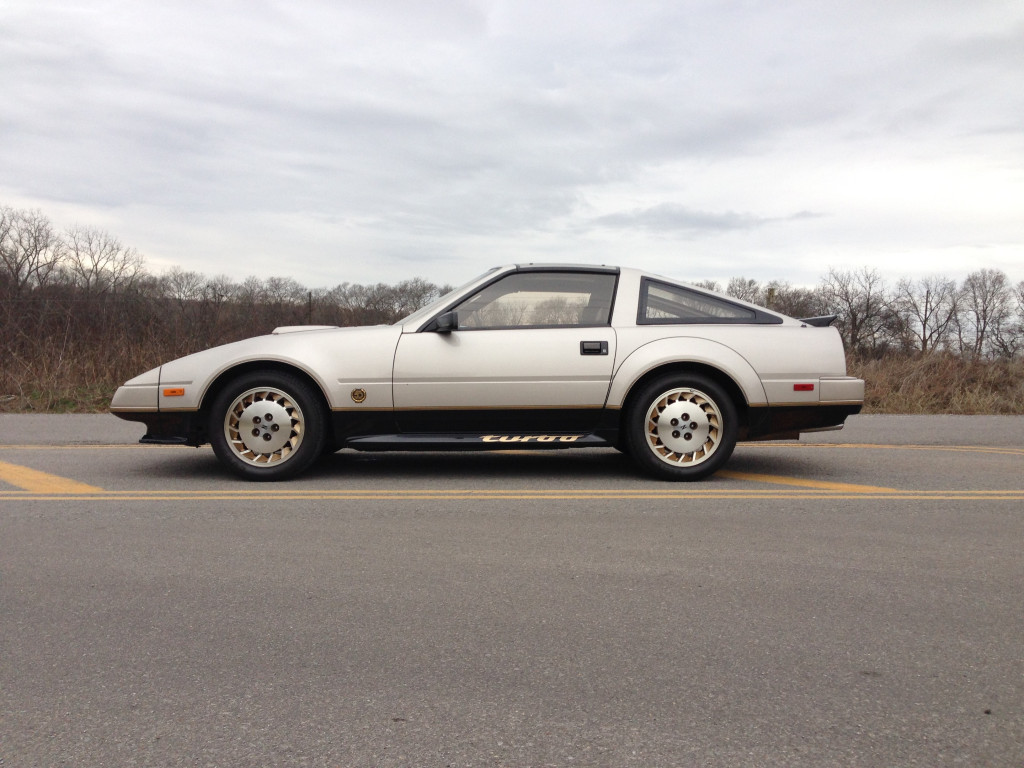
1984 Nissan 300ZX Turbo 50th Anniversary Edition
1984-1989 300ZX, Z31
The Z took on the wedge-shaped, angular look of the 1980s with the introduction of the Z31-generation Datsun 300ZX in 1984. It was a more aerodynamic design that cut the coefficient of drag from 0.38 to 0.31, and once again two-seat and 2+2 body styles were offered. The digital instrument panel was pure Hasselhoff “Knight Rider.” Under the still long hood sat a shorter single-overhead cam 3.0-liter V-6 that made 160 hp in base form and 200 hp in the Turbo. Buyers could once again get a 5-speed manual and now had the option of a 3-speed or 4-speed automatic. It weighed about the same, at 3,080 lb for the Turbo, but it was no faster than the last-generation model with a 15.7-second quarter-mile time. Handling, however, was improved with better geometry for its front strut, rear semi-trailing arm suspension and driver-adjustable shocks for the Turbo. Once again, the Z aimed more for grand tourer than pure sports car, and the $15,799 base price reflected its move upmarket, but it still sold well, topping out with 73,101 cars in 1984. The car became the 300ZX in 1985. Sales fell below 20,000 units for its last full model year.
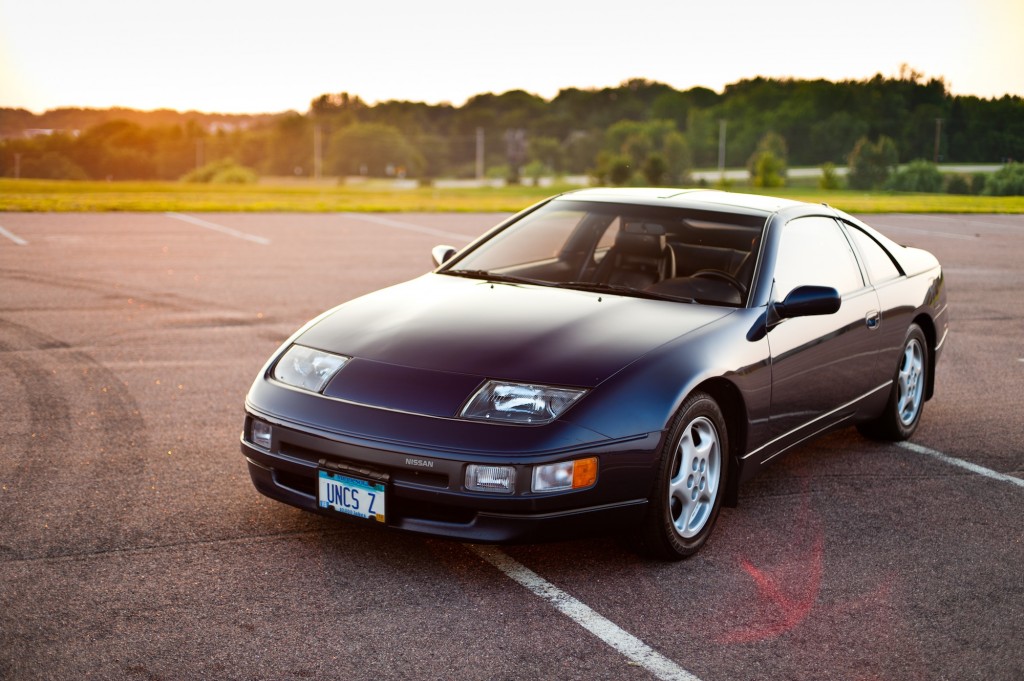
2011 Nissan 370Z And 1990 Nissan 300ZX. Photos by Alex Bellus
1990-1996 Nissan 300ZX, Z32
The Z continued its move toward refinement when the Z32-generation 300ZX hit the market in April of 1989. This car was far more modern and one of the first production cars to be designed with CAD software. It had a cleaner look, a new multi-link rear suspension, and a dual-overhead cam 3.0-liter V-6 with variable-valve timing. The new engine upped the output to 222 hp, cut the 0-60 mph run to about six seconds, and dropped the quarter-mile time to 15.0 seconds. A 5-speed manual and 4-speed automatic were the transmission choices, and two-seat and 2+2 body styles returned. At just 8.5 inches longer than the previous generation on a 4.7-inch longer wheelbase, the 2+2’s rear seat was tiny, and all models featured T-tops. A twin-turbocharged Turbo model arrived later in the model year with 300 hp, a 5.6-second 0-60 mph time, a 13.5-second quarter-mile time, and a $33,000 starting price. The option of rear-axle steering played into the car’s high-end, high-tech character. Nissan worked with Michigan-based ASC to offer a convertible starting in 1993. It was a manual top and a basket handle targa bar was needed for rigidity. By the end of the run in 1996, the 300ZX’s had increased to $37,000 for a base car and about $45,000 for a Turbo. A change in U.S. side impact standards for 1997 marked the end of the road for the Z32.
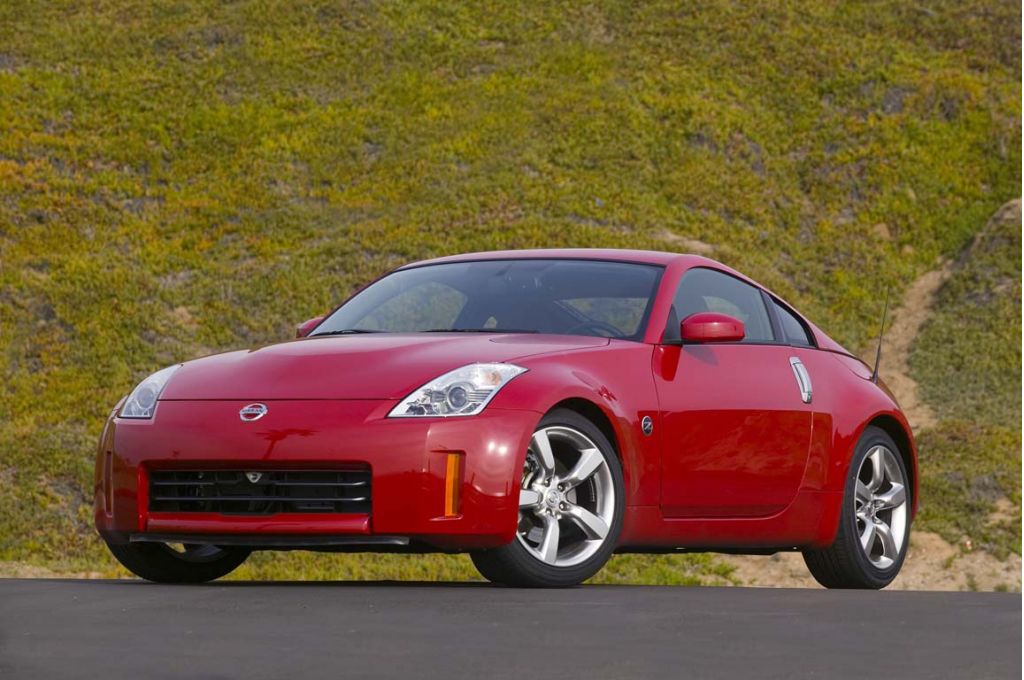
2007 Nissan 350Z
2003-2008 Nissan 350Z, Z33
Nissan merged with Renault in 1999, and the company’s new CEO Carlos Ghosn gave the nod to a new Z. After the previous generation’s price had gotten out of hand, the new 350Z shifted gears. This time Nissan aimed for a sports car first rather than a GT, offering only a two-seater with a starting price below $27,000. The new car pushed the wheels to the corners. Its wheelbase grew from 91.3 to 104.3 inches, but the length was about the same. In continued as a hatchback, which made for useful interior cargo space, and a roadster joined the lineup for 2004. A new front mid-ship (FM) platform moved the engine back as far as possible to achieve an ideal weight balance. Lightweight four-link independent suspension designs front and rear teamed with the stiff, balanced body to provide excellent handling. Still, the 350Z wasn’t a full-on track car as it lacked the brake cooling to get the job done, which has always been a weak point of the Z. A limited-slip differential helped put the power to the pavement in all but the base model, and tire sizes grew from the Z32’s 16 inches to 17 or 18 inches. Under the long hood sat the third generation of the DOHC VQ V-6, now punched out to 3.5 liters to make 287 hp, teamed with a 6-speed manual or 5-speed automatic transmission. Car and Driver posted a 5.4-second 0-60 mph time and a 14.1-second quarter mile, and output increased to 306 hp by the end of its run in 2008. A manual transmission-only Nismo model joined the lineup in 2007, adding Brembo brakes, a body kit, a louder exhaust, and RAYS 18-inch wheels.

2020 Nissan 370Z 50th Anniversary Edition
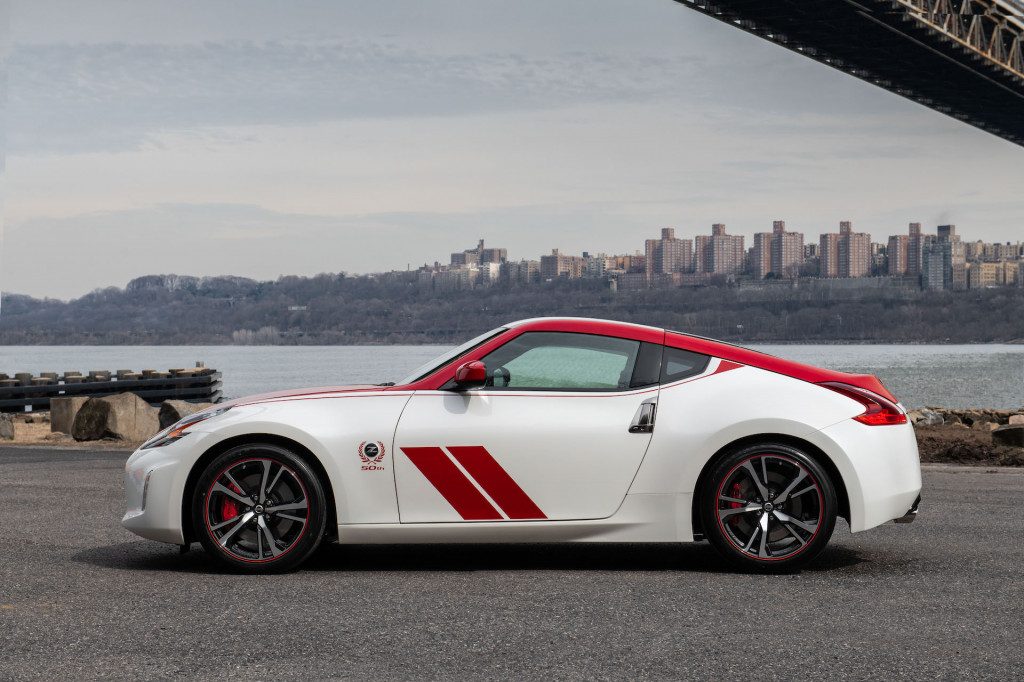
2020 Nissan 370Z 50th Anniversary Edition
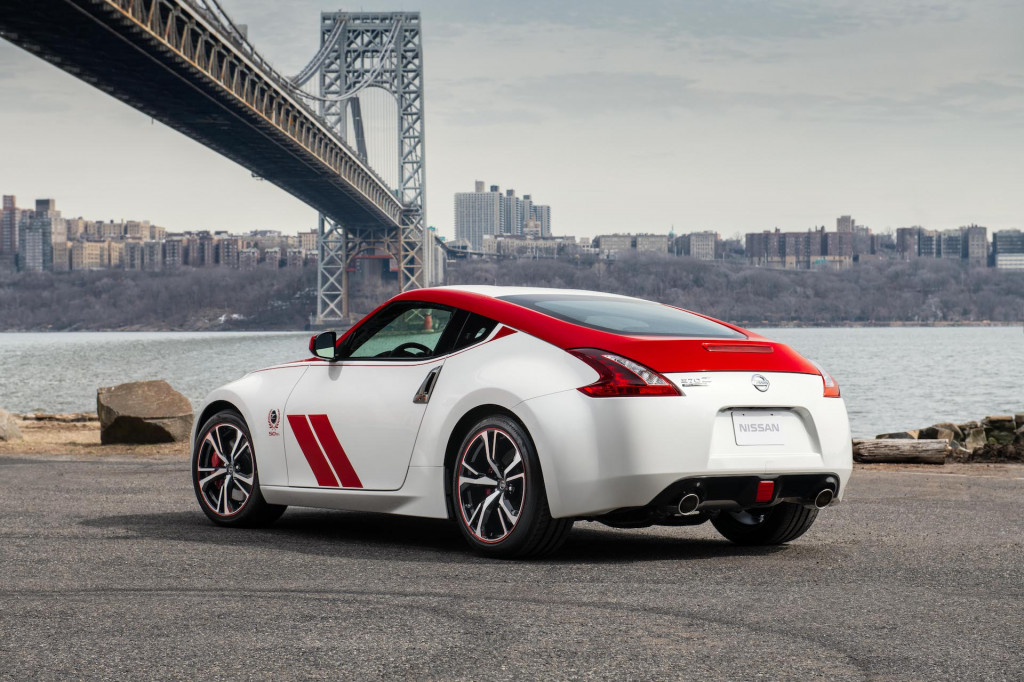
2020 Nissan 370Z 50th Anniversary Edition
2009-2020 Nissan 370Z, Z34
The FM platform continued, but the Z34 370Z had a 3.9-inch shorter wheelbase, a 2.7-inch shorter length, a 1.1-inch wider body, and a revised look. Aluminum for the doors, rear hatch, and A-pillars mostly offset the extra weight of added safety features, but it still gained 33 lb. Still, it handled better, increasing its grip on a skip pad from 0.93 g to 0.97 g, in Car and Driver testing. The VQ V-6 increased to 3.7 liters and 332 hp, good for a 0-60 mph time of 5.1 seconds, but it was coarse, especially in the upper rev range. The 6-speed manual returned but added a downshift rev matching feature to simulate heel-and-toe driving without having to learn the skill. Automatic buyers got a better transmission, a 7-speed with quicker shifts. A Nismo model returned for 2010, used only the manual, and spun out 350 hp; it came with 19-inch RAYS wheels, Nissan Sport Brakes, a limited-slip differential, and a ride quality only a mother could love. The Roadster also returned for 2010. Unfortunately, the 370Z then withered on the vine, with the highlight being an Anniversary Edition package in 2020 with white and red or silver and black inspired by the Brock Racing Enterprises 240Z race cars of the 1970s. It looked like that was the end of the road for the Z, but then…
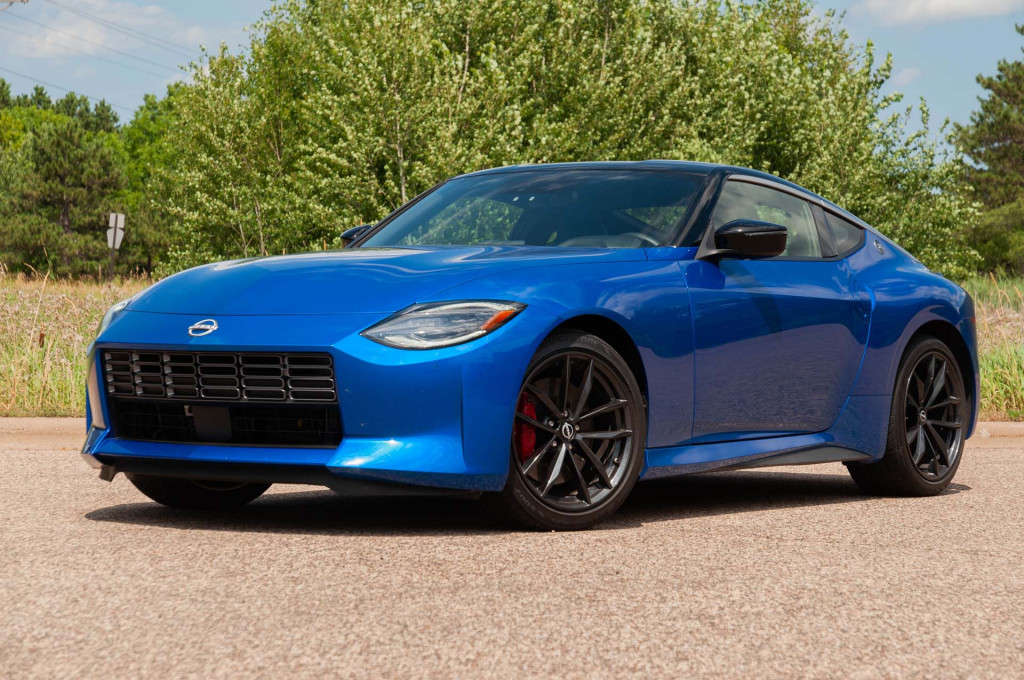
2023 Nissan Z
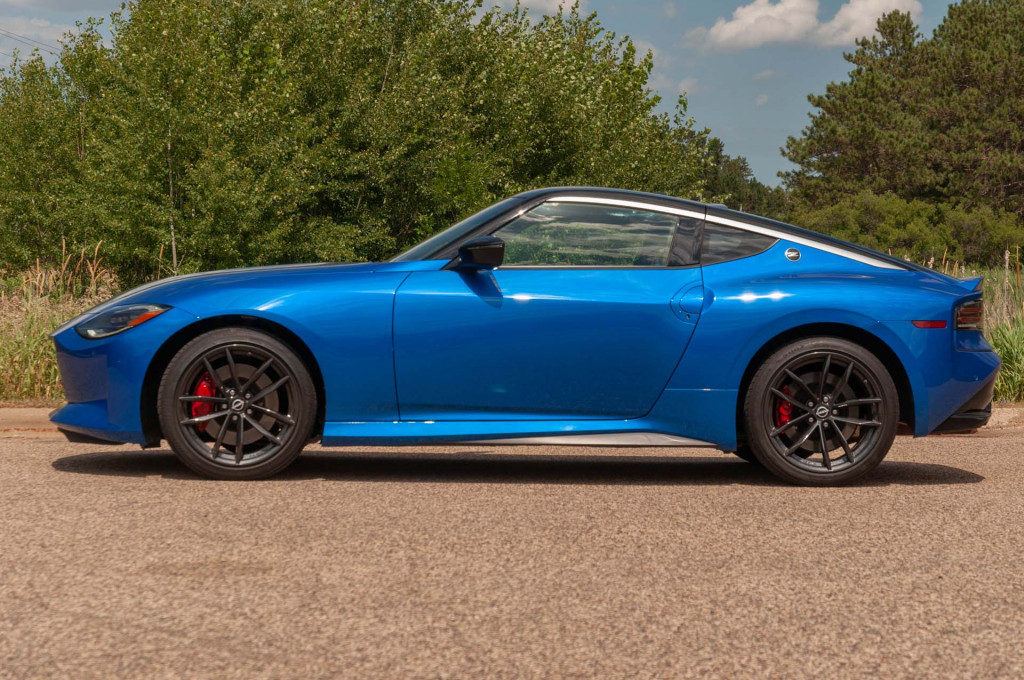
2023 Nissan Z
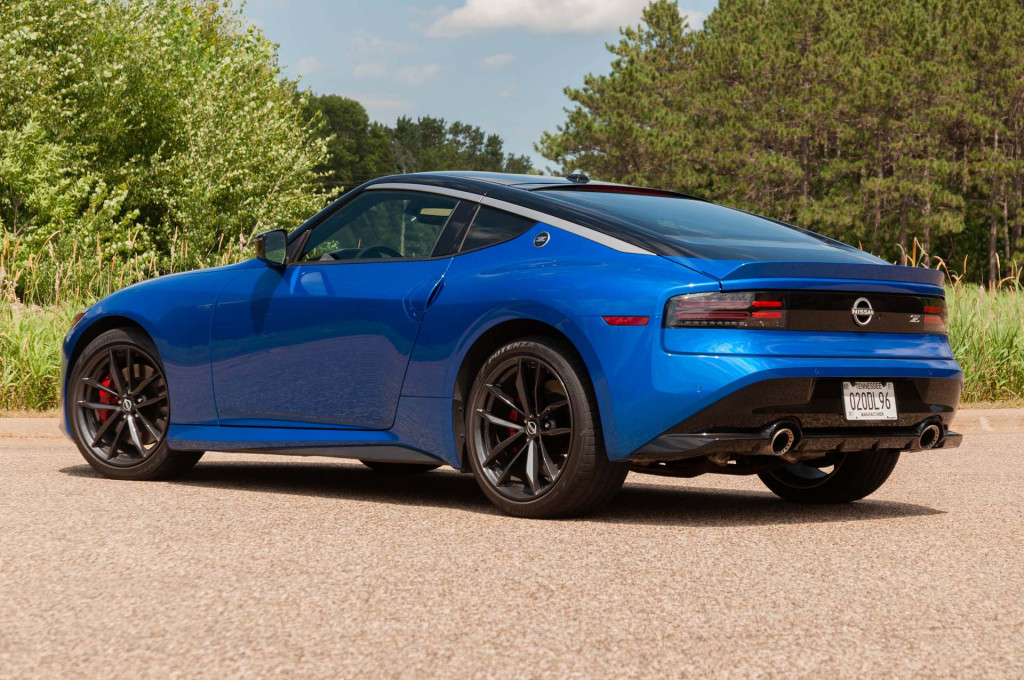
2023 Nissan Z
2022 Nissan Z, Z35
The Z got a reprieve in the early 2000s when enthusiasts within the company advocated for it, and the same thing happened for the Z35 Z. Chief Product Specialist Hiroshi Tamura and design chief Alfonso Albaisa conspired to design a car that would engage enthusiasts and could be built without too much investment. The result is a modern car with retro cues inspired by several generations of Z riding on a strengthened version of the FM platform that debuted for 2003. A turbocharged engine returns under the hood in the form of a twin-turbocharged 3.0-liter V-6 that cranks out 400 hp and 350 lb-ft of torque. The 6-speed carries over, and a new 9-speed automatic replaces the 7-speed. The car is faster than ever, with a mid-four-second 0-60 mph time. The Z35 Z balances both sports car and grand tourer leanings. It’s softer than the 370Z, but faster and it only seats two. It’s offered only as a hatchback coupe, and the price takes a big leap to about $41,000 to start. A $53,000 Performance model adds staggered tires on RAYS 19-inch wheels, sport brakes, and a limited-slip differential. Tamura told Motor Authority the current market doesn’t justify a convertible, but a Nismo model is likely.
